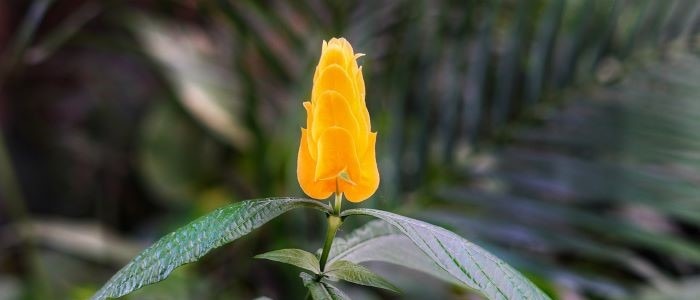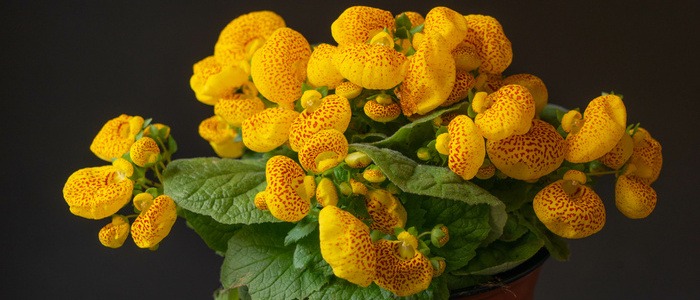Most persons are familiar with Calla Lilies however, there are a number of misconceptions about this easy-to-grow perennial. These popular flowering plants are native to Africa, where they were first catalogued in the 18th century by a Swedish botanist. This botanist mistakenly called the species the “calla lily”, when in reality it is an Arum lily. Originally from Africa, calla lilies are now grown in most countries of the world, although they are considered a pest in some parts of the world.
The calla lily has a rich symbolic heritage, a tradition that reaches back to Greek mythology. In ancient Greece, Zeus’ son Hercules was brought before Hera to drink milk. Hera pushed Hercules away and the drops of milk on the ground turned into lilies. This is a common representation of this beautiful flower, which was reborn from the ashes of its death.
Today the calla lily is a popular choice for weddings. White calla lilies signify the purity of the bride, while the inner spike signifies the impending birth of a child. Other traditional meanings of calla lilies include marital bliss and true devotion. Regardless of the early misconceptions or the flower’s significance, it is sure to delight any recipient.

Calla Lillies Frequently Asked Questions
Do calla lilies grow better in pots or in the ground?
Calla lilies can be grown successfully both in pots and in the ground, but each option has its own advantages and disadvantages. Growing calla lilies in pots allows for more control over their growing conditions, including the ability to move them to different locations to optimize sunlight exposure or protect them from extreme weather. Potted calla lilies also make beautiful additions to patios, balconies, or indoor spaces, adding a touch of elegance with their vibrant flowers and glossy green foliage. On the other hand, planting calla lilies directly in the ground can provide them with more space to spread their
How often do you water calla lilies?
Calla lilies require regular watering to keep their soil consistently moist but not waterlogged. The frequency of watering will depend on various factors, such as the temperature, humidity, and type of soil they are planted in. In general, it is recommended to water calla lilies deeply once or twice a week, ensuring that the water reaches the root zone. However, it is essential to monitor the moisture level of the soil and adjust the watering schedule accordingly. Overwatering can lead to root rot and other issues, so it is important to strike a balance and avoid letting the soil dry out completely.
Tips For Taking Care of Your Calla Lilies
Now if you’re wondering how to care for Calla Lilies, you’ve come to the right place. There are a few tips you need to keep in mind to ensure their healthy growth and longevity.
- One of the most important tips is to keep their soil moist in winter. During the cold months, you can dig up their rhizomes and store them indoors, where they will grow large and bloom next summer. But be careful not to wash them or water them as this may cause fungal root rot.
- A very popular method for treating aphids and greenflies is to apply a mixture of neem oil and insecticidal soap dissolved in water. However, Callas can also be toxic to pets. These plants contain calcium oxalate crystals, which can cause an allergic reaction and irritated skin
- Repotting is an important part of caring for your calla lilies. Repotting is easy and requires no special skill. Planting a calla lily in a new pot means lifting it out of the smaller pot. Be sure to pay attention to the roots, because any damage can cause the plant to die. Then, fill the new pot with new soil and water the plant thoroughly.
- Yes, you can grow Calla lilies indoors, but keep in mind that need well-drained soil that stays moist. Another important tip for growing calla lilies is to select a location where they will receive enough sunlight to grow
Tips for Propagating the Calla Lily Plant
Propagating Calla Lilies is easy once you know how to take care of them. To start with, the soil should be well-draining and ideally moist. Adding some compost to the soil before planting the rhizome is a good idea, as it will help retain moisture.
- Next, plant the calla lily tubers in starter pots, if you are planting in an outdoor garden they should be placed in the ground once frost danger has passed. The ideal spacing between calla lilies is 12 inches, as they need space to bloom.
- During the winter, store the calla lily bulb in a dark, cool place. You can also use an open box in a shaded room. Remember to keep the pot or container out of the reach of children, since calla lilies can be toxic to pets and children. Moreover, they require more water than other plants. To ensure their good growth, water the calla lily as often as you can.
- If you are not keen on growing calla lilies from the bulb, you can buy seeds from flower shops. You can also collect calla lily seeds yourself. Seedlings are easily available in flower shops and can be planted right away. The seeds retain the maternal characteristics of the plant. After hardening, the seedlings can be transplanted into pots and planted in the ground around May.
How to Prune Calla Lilies
When you prune calla lilies, make sure to cut them at the correct time. Cut them back after they have finished blooming, or as soon as they are no longer blooming. Cut them back to the appropriate length and shape.
If you prune too soon, they may develop problems, such as yellowing leaves. Also, be sure to remove any spent flowers to keep your plant looking its best. In addition to these pruning tips, you should also consider the shape of your garden when you prune your calla lily.
To cut off the fading leaves of calla lilies, cut them at the base of the plant. Typically, calla lilies have multiple blooms. To remove the leaves, cut them off 0.5 to 1 inch below the base of the stem. Do not cut off entire leaves; the remaining leaves will turn yellow and brown.
Besides saving the plant, this will also encourage the growth of new blossoms. Cutting the leaves will stimulate other parts of the calla’s blooms. And because baby-calla lilies get energy from the stems, you will be able to enjoy the beauty of these blooms for many years to come.
Common Problems With Calla Lilies
Calla lilies are a beautiful and colorful plant native to southern Africa. Although they are relatively easy to grow and care for, they can suffer from poor conditions, resulting in yellowing and curling leaves and limp stems.
Early detection of these problems can help you keep your plant healthy and beautiful for as long as possible. Listed below are some common problems with calla lilies. To prevent these problems, be sure to follow the steps outlined in this article.
Aphids are the most common pests associated with calla lilies. These pests transmit viruses to the calla plant and can cause spots and streaks to appear on the foliage. If you discover that your calla lily has been infected with aphids, you should use insecticidal soap to treat the leaves.
Another common problem with Callas is blight. It is caused by fungal growth. These infections affect the foliage and blooms of calla lilies.
Using poor soil can lead to root rot. Use a high-quality potting mix and make sure to poke holes in the bottom of the container. If your container does not have drainage holes, you can use peat moss or vermiculite. Pine bark is also a good option. When choosing a potting mix, choose one with a fluffy texture.
Watering calla lilies frequently can cause root rot and other problems.
Yellow Houseplants Other Than Calla Lilies













